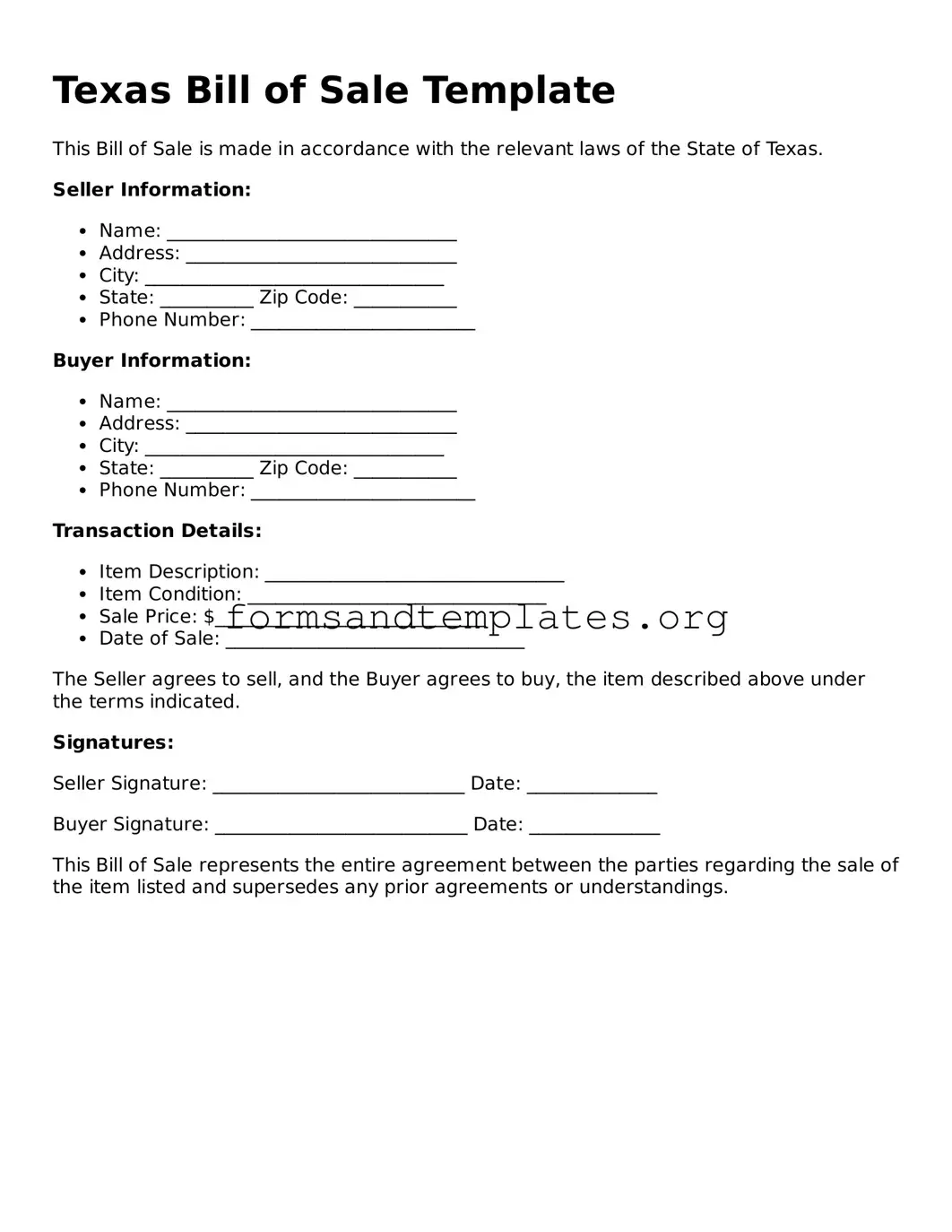Texas Bill of Sale Template
This Bill of Sale is made in accordance with the relevant laws of the State of Texas.
Seller Information:
- Name: _______________________________
- Address: _____________________________
- City: ________________________________
- State: __________ Zip Code: ___________
- Phone Number: ________________________
Buyer Information:
- Name: _______________________________
- Address: _____________________________
- City: ________________________________
- State: __________ Zip Code: ___________
- Phone Number: ________________________
Transaction Details:
- Item Description: ________________________________
- Item Condition: ________________________________
- Sale Price: $_____________________________
- Date of Sale: ________________________________
The Seller agrees to sell, and the Buyer agrees to buy, the item described above under the terms indicated.
Signatures:
Seller Signature: ___________________________ Date: ______________
Buyer Signature: ___________________________ Date: ______________
This Bill of Sale represents the entire agreement between the parties regarding the sale of the item listed and supersedes any prior agreements or understandings.
